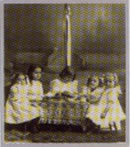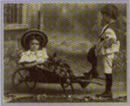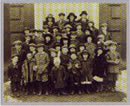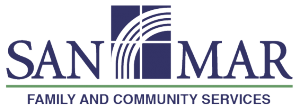During the years following the Civil War, concern was expressed throughout the Washington County community for the orphan children with no apparent place to live other than the County Alms House where many homeless adults were also living.
 By 1883 an action plan was implemented as a group of prominent citizens came together to form a new non profit corporation: The Washington County Orphan’s Home. Together, they were able to raise enough funds to purchase the property at 355 South Potomac Street, in Hagerstown, and to hire a superintendent and several other staff. In a report to the board of managers in 1918 then superintendent, Walter Esmer noted “It was the first successful attempt in the State of Maryland of the people of a county, without state financial assistance, to care for their county’s dependent children.”
By 1883 an action plan was implemented as a group of prominent citizens came together to form a new non profit corporation: The Washington County Orphan’s Home. Together, they were able to raise enough funds to purchase the property at 355 South Potomac Street, in Hagerstown, and to hire a superintendent and several other staff. In a report to the board of managers in 1918 then superintendent, Walter Esmer noted “It was the first successful attempt in the State of Maryland of the people of a county, without state financial assistance, to care for their county’s dependent children.”
On November 8, 1883 seven year old Eddie and his five year old sister, Edith moved out of the Alms House and into the safety of the new orphanage. That first year welcomed 69 children into care. They were to become the first of thousands to follow.

 Only two years later it became clear the majority of children in need were not orphans. In the first of a series of adaptations to changing times and needs the home changed its name to “The Washington County Home for Orphan and Friendless Children” and amended its charter, expanding its purpose to provide for orphans and destitute children who came under the organization’s care.
Only two years later it became clear the majority of children in need were not orphans. In the first of a series of adaptations to changing times and needs the home changed its name to “The Washington County Home for Orphan and Friendless Children” and amended its charter, expanding its purpose to provide for orphans and destitute children who came under the organization’s care.
 For the next 44 years the Home continued to provide care for children at the original location in Hagerstown. Then in 1927 a move was made from the aging facility to a newly constructed modern building located on 60 acres in the rural community of San Mar located ten miles away.
For the next 44 years the Home continued to provide care for children at the original location in Hagerstown. Then in 1927 a move was made from the aging facility to a newly constructed modern building located on 60 acres in the rural community of San Mar located ten miles away.
The name was officially changed to reflect the move to the community of San Mar.
In March, 1987 the board of managers made the decision to specialize care to adolescent girls and to increase the services offered. At the same time an extensive renovation of the facility was completed.
The Edward and Pauline Anderson Transitional Living Home is opened for girls successfully completing the program in the main group home.
San Mar is licensed as a Child Placement Agency.
Operating under the Child Placement Agency a program of Treatment Foster Care is begun. Whereas the original intention of the program is to provide an additional resource to girls completing the group home children and youth may be placed into homes without ever having been in any other San Mar program. Once again through the foster care program San Mar is able to provide care for both girls and boys.
The Maryland State Department of Education licenses the San Mar Educational Program.
The San Mar Educational Program is upgraded to status as the San Mar School.
On August 1 the Jack E. Barr Therapeutic Group Home opens. The program has a capacity for 8 girls. By November 21 the program is operating at full capacity where it will remain for a long time.
On February 28 San Mar receives national accreditation from the Council On Accreditation for all residential, educational, and treatment foster care programs operated by the organization.
San Mar is fully certified as meeting the Standards of Excellence.
The Maryland Department of Human Resources grants San Mar a license to operate as an Adoption agency. The organization is offered a $400,000 grant from the Department of Juvenile Services to construct and operate a Shelter Care program for girls. The board commits to conducting a capital campaign to raise 1.2 million dollars for matching funds for the shelter and for a multi purpose center to serve all the girls in care.
San Mar is licensed as an Adoption Agency.
On July 26 the shelter opens and the first girl moves in. In September the organization is re-accredited by COA.
San Mar’s Teen Mother and Infant program is licensed.
Allegany Girl’s Home joins the San Mar Continuum of Care.
A strategic plan is developed in which San Mar begins to look at becoming more family focused and community engaged.
San Mar partners with Casey Family Programs, the largest foundation in America dedicated solely to child welfare, to begin a community initiative.
The Bester community in Hagerstown is identified as the location for the Community of Hope Initiative. 900 residents of the community attend an open house and dinner held at the elementary school to introduce the principles of hope to the community.
The Fletcher Foundation awards $220,000 to San Mar to begin the Bester Community of Hope initiative. An office is opened across the street from the elementary school and full time staff are hired.
Following a multi-year transition process, all residential programs and the San Mar School are closed when the organization’s mission statement is changed to Cultivating hope and well-being in children, families and communities. The organization commits to become child centered, family focused and community engaged and focused on upstream efforts.
An Outpatient Community Mental Health Center is licensed by the Department of Health and Mental Hygiene and opens on the San Mar campus in the building previously operating as the Barr Therapeutic Group Home.
Funding is received from the state from Title IV-E funding to begin a STEPS program that seeks to support families in the Bester community.
Through partnerships with the Community Free Clinic, Meritus, and the Board of Education a health clinic is begun in the Bester Elementary School.
The Fletcher Foundation renews support to the Bester Community of Hope with a grant of $272,000.
Title IV-E funding is increased to enable expanding the STEPS program for families.
An office is opened in the Elgin Station Community Center in Hagerstown for the expanded STEPS staff.
The Health Resources and Services Administration collaborates with with BCOH to fund increased health resources in the service catchment.
Following thirty three years at the helm of CEO, Bruce Anderson retires from his post at San Mar. Keith Fanjoy LCSW-C is named successor and assumes the role of CEO on April 2.
San Mar receives notification from the Maryland State Department of Education of a annual grant award of $400,000 to manage 21st Century Community Learning Centers, expanding existing services at Bester Elementary and providing a new service at E. Russell Hicks Middle School.
Bester Community of Hope, consolidates it’s two field offices at Elgin Station and Mill St, into one larger integrated space at 356 Mill St, providing comprehensive neighborhood services in the heart of the South End community.
BCOH receives national support with the Jim Casey award from Casey Family Programs, recognized in Seattle with child welfare leaders across the country in attendance, recognizing the upstream transformation of San Mar.
Your support directly impacts the success of our program. We promise 100% of your donation will make a difference in our mission.
Donate NowPlanned GivingTreatment Foster Care, Jack E Barr Center for Well-Being (Outpatient Mental Health Clinic)
8504 Mapleville Road Boonsboro Maryland 21713Phone: (301) 733-9067